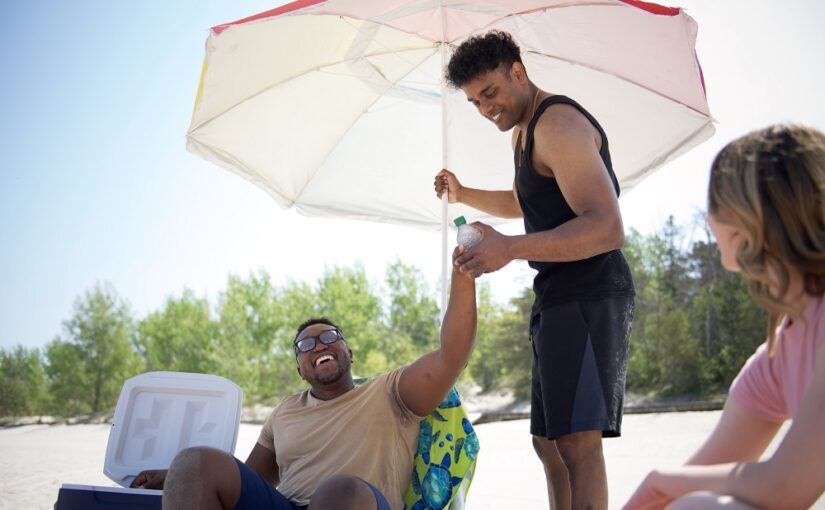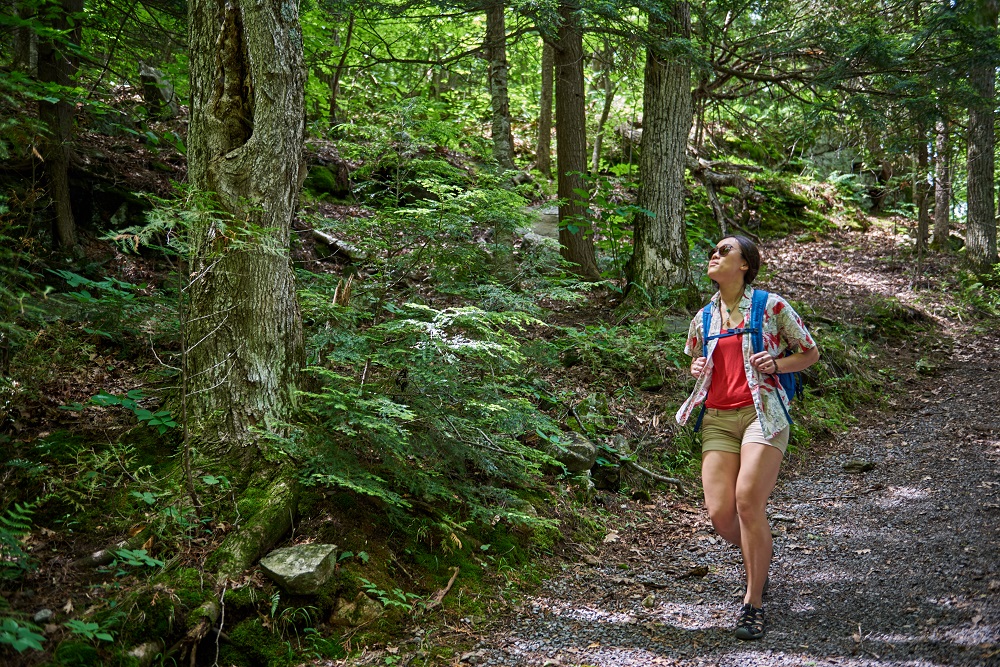If you’ve set foot outside this summer, you know that temperatures have been hitting record-highs!
While the heat can mean beautiful beach days, sunset picnics, and other summer adventures, it also brings an increased risk for heat-related emergencies.
Stay safe, cool, and comfortable outside with these six tips:
1. Stay hydrated
Water is essential any time you step into the summer heat.
Whether relaxing on the beach or taking a hike, a reusable water bottle will help you stay cool and hydrated.
Hikers that are tackling any moderate or difficult trail should pack an extra water bottle (big trails like the Crack require a minimum of 2 L of water per hiker).
Not a big water drinker? Consider bringing electrolyte tablets with you to add some fizz to your bottle and help you stay on top of your hydration goals.
Leave the coffee and other caffeinated beverages at home — they’ll just make you more dehydrated!
In the market for a new reusable bottle? Check out our Park Store!
2. Wear a hat and sunscreen
Protect your skin from burning this summer!
Keep your hat on and apply high SPF sunscreen liberally. And we mean liberally!
Sweating? Reapply your sunscreen.
Swimming? Lather that sunscreen on again!
Planning to work up a sweat on a difficult hike? Consider opting for long sleeve, moisture-wicking SPF clothing to provide more consistent coverage. Just make sure to apply a high SPF sunscreen to any skin that your clothing isn’t covering.
3. Start your hikes early or later
Avoid hitting the trails when the sun’s at its highest.
Start your hike early in the morning or a little later in the afternoon.
That said, be very careful not to start your hike too late in the day! Hiking in the heat is dangerous, but so is hiking after dusk. Always leave yourself ample time to make it back from your trek. Plan to make it off the trail before the sun goes down and always let a trusted person know your hiking deets.
4. Take a dip!
Cool off with frequent swims. This is particularly important on days when the humidity is high.
We recommend swimmers stay inside our beaches’ designated buoys. These areas typically include gently sloped beaches and softer bottoms.
Parents: please keep a watchful eye on your children at all times. PFDs are recommended for children and weak swimmers.
Get the low-down on water safety in parks.
5. Keep things shady
Many provincial park day use areas feature big, beautiful trees that provide shade for your friends and family to enjoy.
Take advantage of these shaded spots to rest and recover from the summer heat.
No shade available? Bring along a beach umbrella and make your own (just be sure not to block anyone’s beach view!).
6. Keep it low and go slow
We completely understand what a letdown it can be to not get to do the big hike, the big paddle, the epic cycling trek that you had planned for your vacation. It can be hard to cancel or change plans due to high temperatures, but doing so can ensure that you feel well enough to enjoy the rest of your time off.
When planning and adapting activities for high temperature days, remember “keep it low and go slow.”
Try to keep your heart rate in a moderate range (low!) and keep your activities gentler and lighter than you might on a cooler day with optimal conditions (slow!)
Looking to explore during cooler temperatures? Consider visiting your favourite provincial park in the fall!
7. Know the signs of heat-related emergencies
High temperature days aren’t just sweaty. They can also be dangerous, particularly for seniors and children. Make sure you keep an eye on how you and the people you are traveling with are feeling throughout the day.
The Canadian Red Cross describes the symptoms of heat exhaustion as:
- moist, red, or pale skin
- nausea
- dizziness
Move anyone experiencing these symptoms to a cool place and give them water immediately.
Symptoms of heat stroke are more severe:
- red, hot, and dry skin
- irritable
- bizarre or aggressive behaviour
- progressive loss of consciousness
- rapid, weak pulse becoming irregular
- rapid, shallow breathing and seizures
If you or any of your group are experiencing symptoms of heat stroke, call 9-1-1.
Traveling with a pet? Take the time to learn about what heat exhaustion looks like for them and how to avoid it.
Remember: never leave children or pets in vehicles or in full sun unattended.







